Species spotlight – fishing for Rudd
I was a spotty faced teenager when I caught my first Rudd. I was fishing Napton Reservoir in Warwickshire hoping to catch tench when I struck into what I thought was the biggest roach I’d ever seen. And what a roach it would have been, for, to my young and inexperienced eyes it was huge.
It was only upon closer inspection and a further verification from a nearby fellow angler that it was determined to be a Rudd. The fish weighed a smidgeon over two pounds and although it was many years ago, it was and still remains the most beautiful fish I have ever caught.
Of all the denizens of the deep that inhabit our rivers, lakes and ponds, surely the Rudd is the most glorious, especially when they are big. For me a specimen Rudd is anything above a pound in weight and is truly a thing to behold. They have an average lifespan of around ten years and closely resemble the roach in appearance and although they are not nearly as common as their silvery cousins they are still fairly widespread in England, although possibly less so in Wales and Scotland.
How to identify a Rudd
The Rudd (scardinius erythropthalmus) has a deep body with chain mail scales which in larger specimens develop from silver into a glorious burnished gold. Its fins are a stunning vermilion red and it has orangey yellow eyes and I love ‘em.
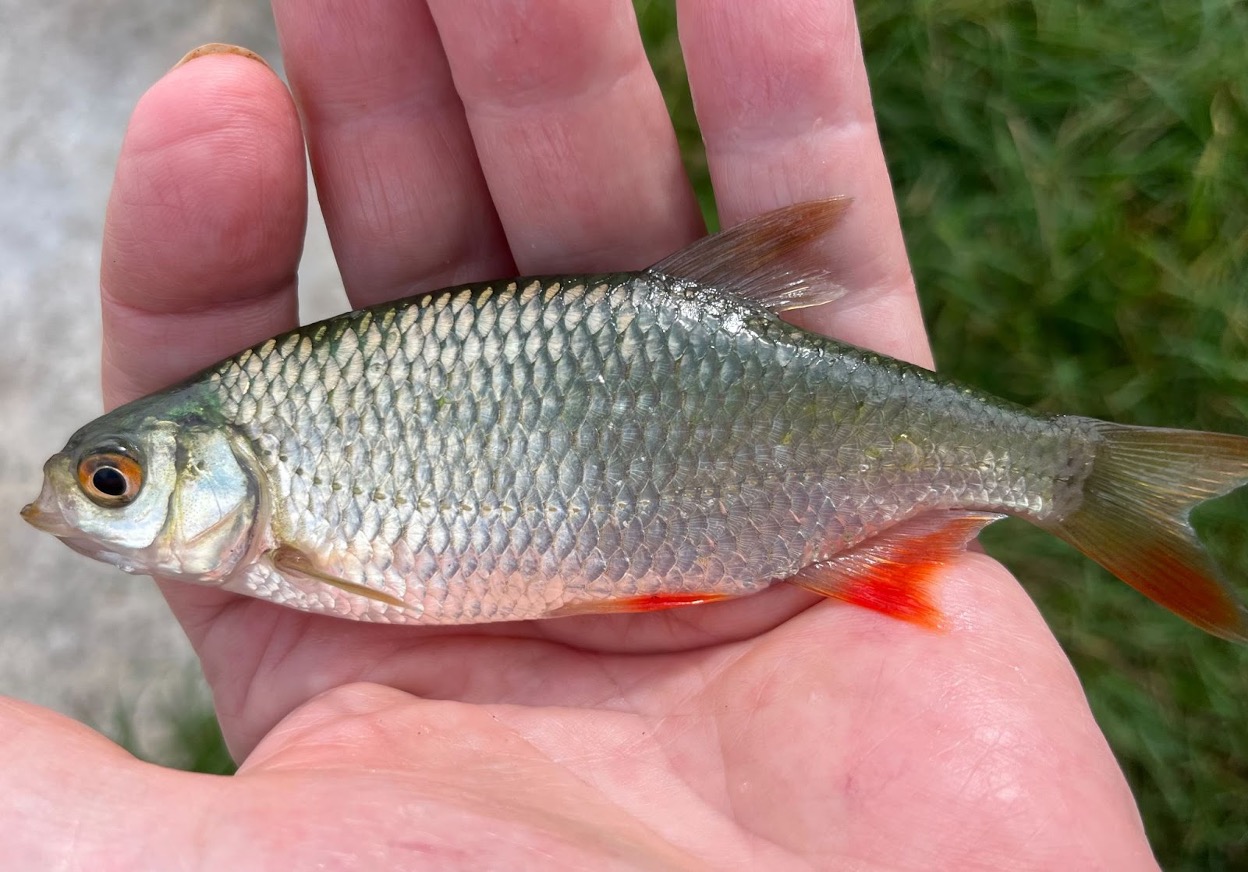
The Rudd (scardinius erythropthalmus) has a deep body with chain mail scales which in larger specimens develop from silver into a glorious burnished gold
It has been said by people who know me that when I say ‘I love ‘em’ about a particular species, it doesn’t carry much weight as I tend to say it about every fish that swims and I suppose it’s true, I do love them all. With the possible exception of bream, I’m not overly fond of the snotty bin lids, although that said, I’m not averse to saying hello to one or two if I’m having a particularly quiet day.
Similar to Roach
Rudd have many similarities to roach particularly in size, shape and colouration and I believe at the time of writing the record rod caught Rudd in the UK is a fabulous 4lb 10oz specimen caught back in 2001 and the record roach is an equally stunning fish of 4lb 5oz caught in 2006. These similarities often confuse the novice angler but there are easy ways of distinguishing the two species.
- The fins on a Rudd are a glorious red and are generally much brighter than those of a Roach.
- Rudd are predominantly surface feeders and as such their bottom lip protrudes further than their top lip. With Roach the opposite is true.
- The dorsal fin (the fin along the top of it’s back) of the Rudd is set further back along it’s body and is nearer to the caudal fin (tail fin) than the dorsal fin of a roach.
Rudd are a shoal fish
Again, similar to roach, Rudd are sociable creatures and being very much a pike’s idea of a tasty snack, more often than not follow the maxim of there being safety in numbers and therefore tend to stick very close to their brethren. Shoals of Rudd can consist of many fish, sometimes into the hundreds, so if you go armed with polarising sunglasses, coupled with a fairy-like tread and careful approach to the water’s edge you can often see these shoals swimming just below the surface.
Habitat for Rudd
As far as I’m concerned one of the attractions of fishing for Rudd is the fact that like me they enjoy the quiet life, so although they like to hang out among friends, they don’t much like the hectic pressured existence so beloved by barbel and chub. With this in mind you’re unlikely to find them in fast flowing rivers and weir pools. A better place to look would be lakes, ponds, some canals and slack areas in slow rivers.
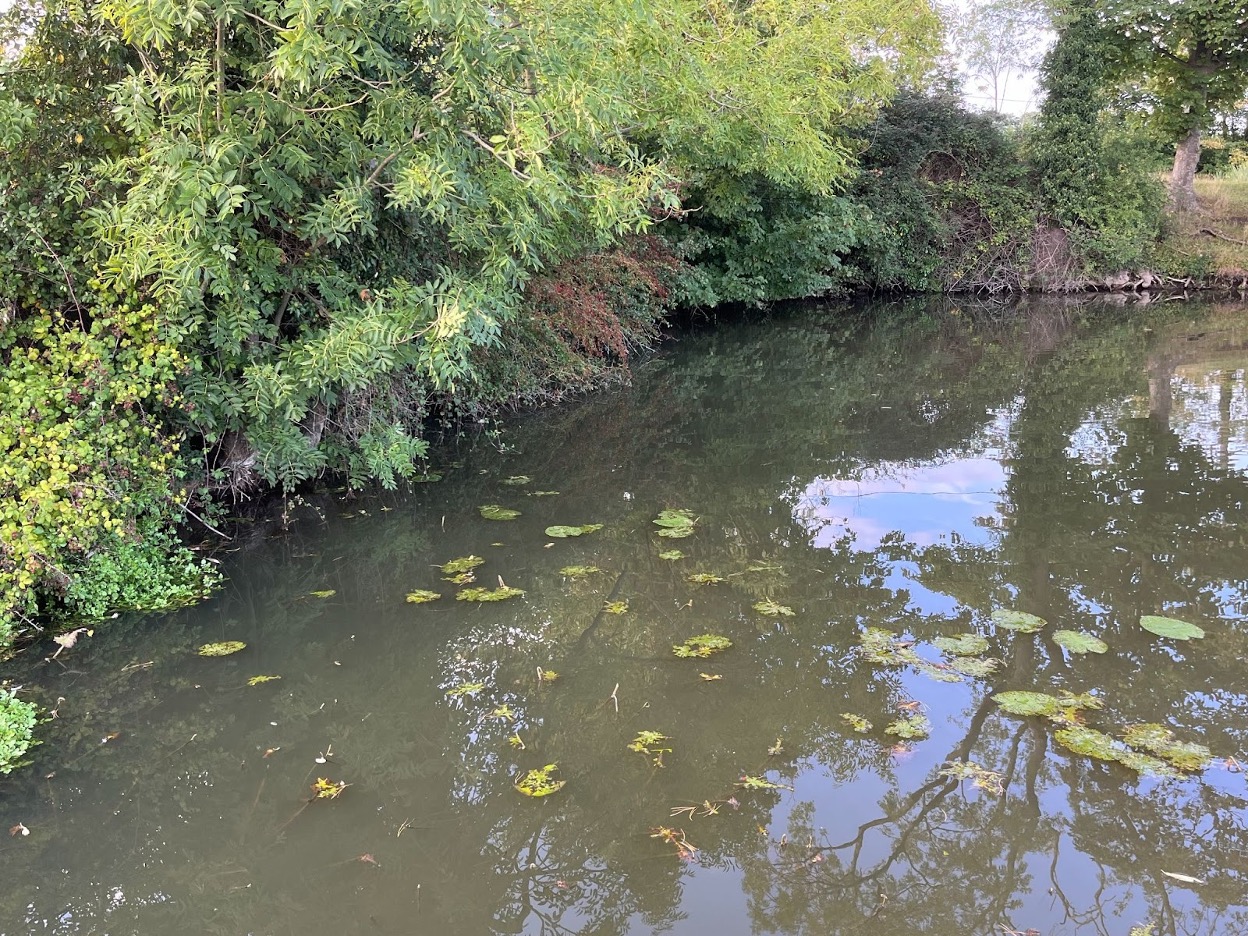
A Ruddy looking swim
Another reason Rudd get a big tick from me is that unlike many species they will often feed throughout the day even during very warm periods of bright sunshine. A syndicate pool I am a member of holds a good head of Rudd and I’ve often continued catching when other fish are lounging in their deckchairs nursing a banana daiquiri.
Small Fish
Rudd are prolific breeders and in very small ponds a similar problem may develop as to the one that affects perch and to a similar extent, roach. A limited food supply and an ever increasing population can result in thousands of mature stunted fish weighing only a few ounces. However, don’t completely rule out fishing small ponds as there are always exceptions to the rule.
Where to find Rudd
When after a ruby finned whacker, I would suggest fishing the shallower parts of the pool preferably close to weed beds particularly in the summer months. During the winter they may move to deeper water. Unlike carp who will often follow a prevailing wind, Rudd tend to seek out more sheltered spots away from any turbulence so look for quiet secluded areas especially if they contain lots of vegetation, lily pads etc. As they spend a lot of time around the surface of the water they are usually easy to find, however, if when searching the water no fish are seen, try flicking a couple of small pieces of bread out into the swim, if any Rudd are there they will soon make their presence known as they eagerly begin to nibble on the flake.

Catching Rudd
In many ways the methods used for catching Rudd are very similar to those used when fishing for roach. However, there are some tactics that are much more Rudd specific.
Surface feeders
Rudd generally like to hang around in the upper layers of the water from where they can snatch flies and other insects from the surface and molluscs such as snails from the underside of lily pads. With this in mind it is unlikely to be very productive if your bait is anchored firmly on the bottom of the lake. That is not to say that Rudd never feed on the bottom as I have personally taken many fish in the lower regions, but, for me I would explore the top foot or so first.
General tackle
Generally when float fishing I use a rod of around eleven or twelve feet. My personal favourite is a carbon fibre rod that was given to me as a present back in the early nineteen nineties. It is twelve feet long and has caught me many a good fish.
Reels
A good general purpose fixed spool reel loaded two or three pound line will serve you well. Nothing too big as balanced tackle is important. I’m not very technically minded so I don’t go in for advising people to buy the latest whizz bang wallop reel, number 1009465UPURS from whoever is the current leading tackle manufacturer. I can’t be doing with all that. There are many good reels available so just pick one that suits you and your pocket.
Hooks
The same goes for hooks. Anything from a size twelve down to a twenty depending on what bait is used will do. All these serial numbers often quoted leave me bewildered. The main thing is to fish as fine as possible.
Methods
As Rudd have a habit of hanging around the upper layers of the water there are a couple of methods I would suggest trying.
Flat float
One way to catch surface feeding fish is to use a ‘flat’ float. Take a peacock quill float or a short piece of dowel and attach it to the line top and bottom using float rubbers. Fix the float about two or three feet from the hook (or further if necessary) and lock it in place with a small BB shot at each end. Using bread flake or any floating bait of choice cast out to the desired spot. Unlike orthodox float fishing where the float cocks and sits up vertically in the water, the flat float does exactly as the name suggests and lies horizontally flat on the surface.
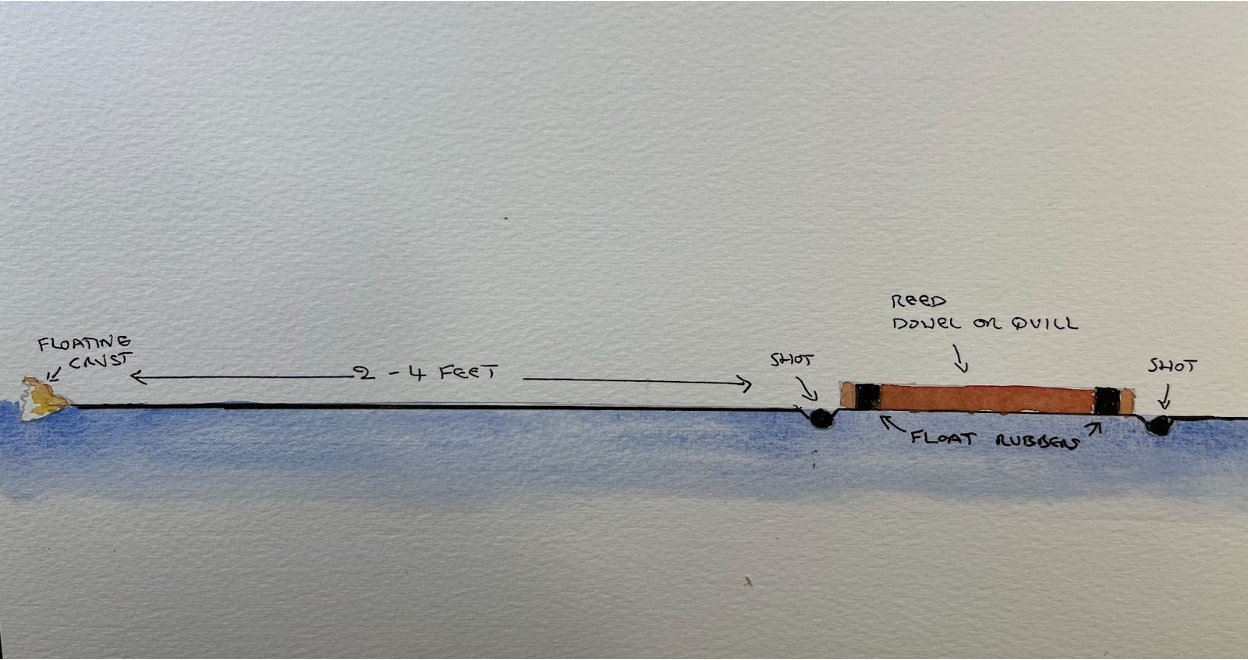
Catching Rudd with the flat float technique
Two functions:
The flat float offers two functions.
- Rather than being pulled under the water as in traditional float fishing, the flat float registers a bite by initially being pulled across the surface of the water.
- It adds casting, thus allowing you to reach fish further from the bank that may not be reachable if free lining.
On the drop
When the fish are not obviously surface feeding and you’re not sure at what depth to find them, another tried and tested method is to fish ‘on the drop’. The idea is to allow the bait to slowly drift down towards the bottom, thus giving the fish time to intercept it as it goes down. To do this an insert waggler would be ideal for the job. The key is to get the shotting right.
Shots
If you’re fishing shallow water of say, three or four feet deep, using as light a float as possible, place the bulk shot just under the float and once you have the float cocked, pinch dust shot at intervals of a foot or so between the float and the hook. These dust shot allow the bait to sink steadily with the line going down evenly in a straight line, ideally sinking at a rate of around a foot every five seconds or so. Thus should a fish take the bait there will be an immediate indication with the float.
It may be suggested that when fishing ‘on the drop’ no shot should be used between the bulk shot and the hook, therefore allowing the bait to sink more naturally. The potential problem with this is without the dust shot the line may not sink evenly and bites may not be registered immediately if at all.
Finding the fish
Obviously if the bites are registering within a few seconds of the bait hitting the water it means that the fish are feeding in the surface layers and so it makes sense to shorten the rig by bringing the float nearer to the hook to accommodate this. If after a while the bites cease to happen it may be that the fish have moved to deeper water so now try lengthening the rig until you find them. You may need to do this a number of times during a session. As always it is advisable to use as light a line as possible, I would suggest using a maximum of three or four pound breaking strain.
Baits
For the ‘on the drop’ tactic to be effective small baits should be used. Like all fish, Rudd love maggots and a single or double mounted on a size eighteen hook can account for many coming to the net. I’ve also caught them on casters, miniscule pieces of luncheon meat and sweetcorn. Also a firm favourite are small earth worms and tiny pieces of chopped worm. But, probably number one on the menu is bread, particularly when fished on or just below the surface.
Small hooks
When fishing with a small bait it is a good idea to use a correspondingly small hook. Something around a sixteen or eighteen would be ideal, but, you can go even smaller if your eyesight is up to it.
Bread
Bread can be fished in a number of ways but the easiest and always my first choice is a piece of flake. Simply pull a small piece from a slice of white bread and squeeze it onto the hook leaving one edge nice and fluffy. A hook size of maybe ten or twelve would be right for this. Cast out and await results, which are more often than not instantaneous.
Bread Punch
Bread punch is another very effective way of catching Rudd. Using either a shop bought bread punch or, if you’re a tight wad like me and dislike laying out hard earned cash for tackle, (I still use some home made goose quill floats) the fat end of an empty ball point pen tube, simply press your punch into the slice and withdraw a small disc of bread. Pass the hook through it and send it flying towards the eagerly awaiting fish.
Feeding
When surface fishing for Rudd it is of little use throwing in great heavy balls of groundbait that will immediately sink and disperse on the bottom. A better method is to feed regularly with small amounts of maggots to try to get the fish competing for food in the upper layers.
If groundbait is used, throw in small conker sized balls of very fine mix in order to produce a cloud that hangs around near the surface. To make this more effective try adding condensed milk to the mix as this produces a lovely milky cloud that can stick around for quite some time.
Conclusion
From when I was a very small child fishing for sticklebacks in the brook close to my home, fishing has always played a big part in my life and as already mentioned I love catching fish, whatever species they may be.
But if pushed to choose a favourite, I reckon Rudd would be my first choice. Not because of their fighting qualities and certainly not because of their size. No, they would be first choice because they are simply the most stunning looking fish that swims.
It’s true that some might come close in the best looking fish stakes, but none surpasses them. They are simply the best and if next time you go out and are fortunate to catch one around the 1lb mark, take a good look at it and you will see what I mean.
FAQs
Can Rudd be caught using a feeder?
Yes, Rudd can be found at just about every depth from the bottom to the surface layers and can certainly be caught using a swim feeder, particularly in cold weather.
Can Rudd breed with other fish?
Yes, Rudd can cross breed (hybridise) with other fish, particularly roach and bream. True Rudd can often be identified by the protruding lower lip.
What are the best baits to catch Rudd?
The best baits for catching Rudd are, bread, maggots, casters and sweetcorn.
Can you catch Rudd in the winter?
Although not as prolific as in the summer, Rudd can be caught during the darker months. Steer clear of the shallows and target the deeper areas to find them.
Are Rudd widespread?
Not as widely spread as their close cousin the roach. Nevertheless they are still quite common in England. Good places to try would be:
Similar articles
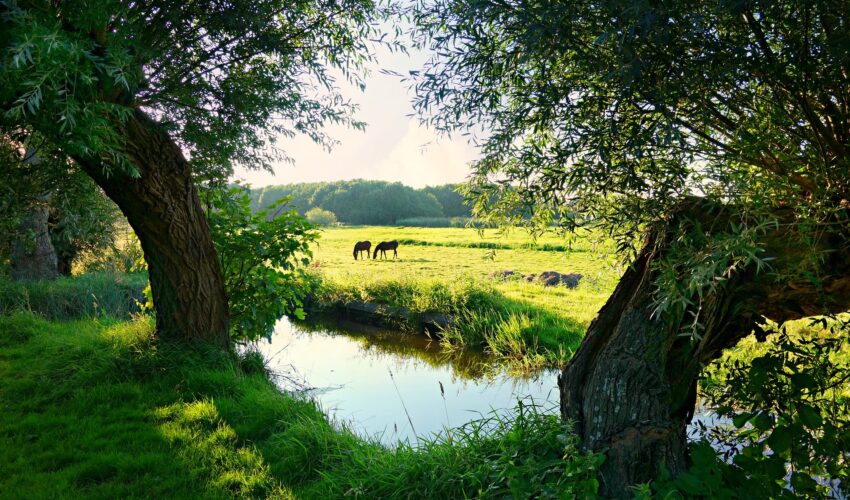
River Fishing – A guide to getting started
Are you thinking of going for a trip to the river in 2025 but find yourself filled with trepidation because you have never fished running water before? Well I want you to relax. Let us take the mysteries out of…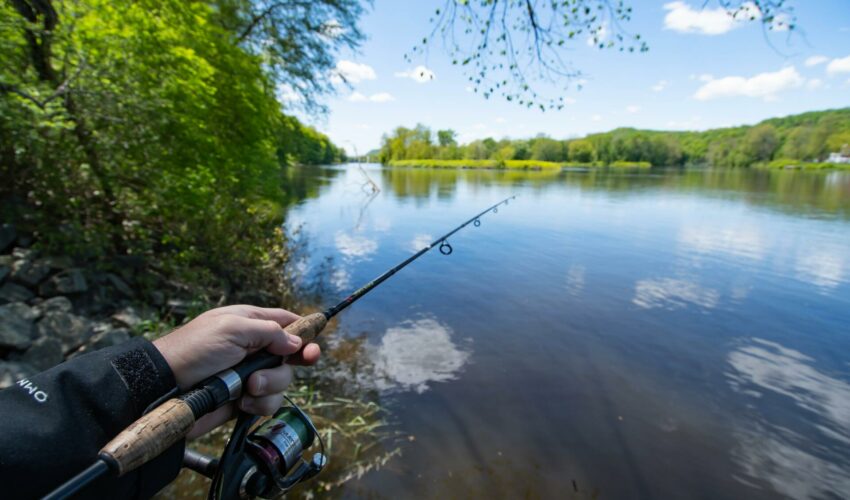
A guide to fishing licences in 2025
Whether you want to become a new angler or you’ve been fishing for years, you will be required to obtain the Environment Agency Rod Licence. In this article we explain what you’ll need if you want to go fishing in…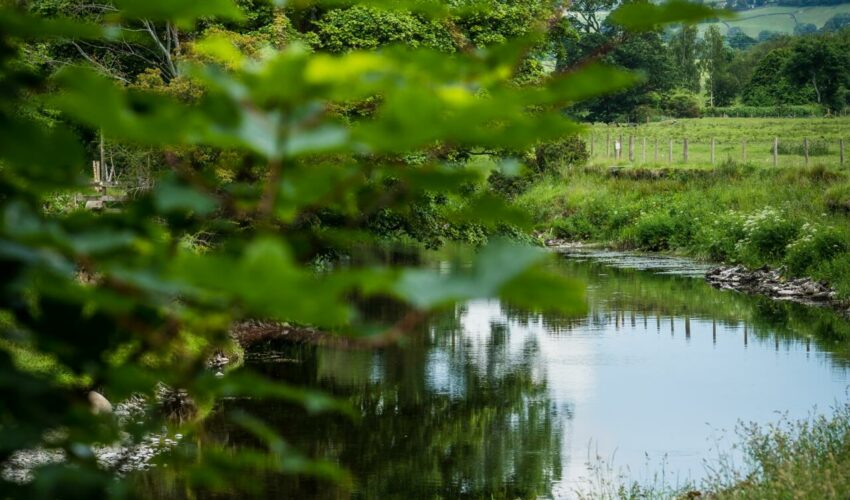
Make the most of the 2025 river season with this in-depth guide to fishing rivers
If you’re new to fishing rivers, or just fancy a change from fishing stillwaters, this guide will help you make the most of the new 2025 river fishing season. With advice on reading the water, what species to fish for…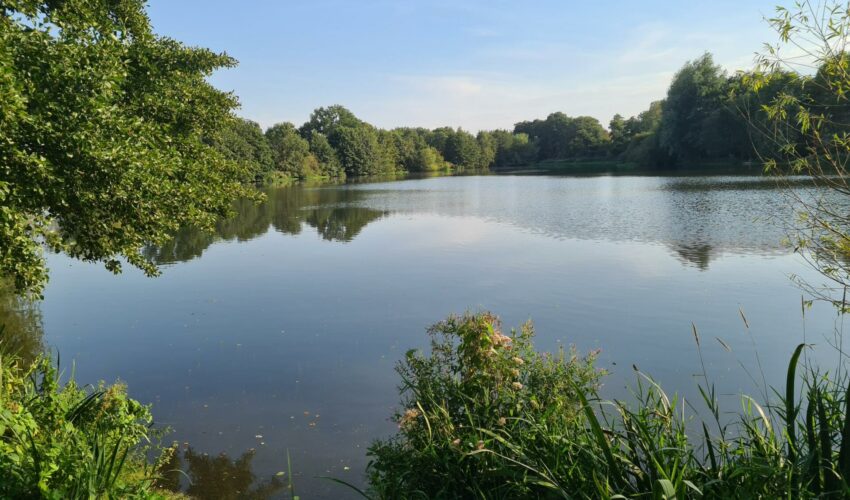
Our guide to fishing this spring (2025)
With the worst of the weather over (we hope!) and with spring finally here, it’s time to clean out that tackle box and get on the bank for some spring time fishing.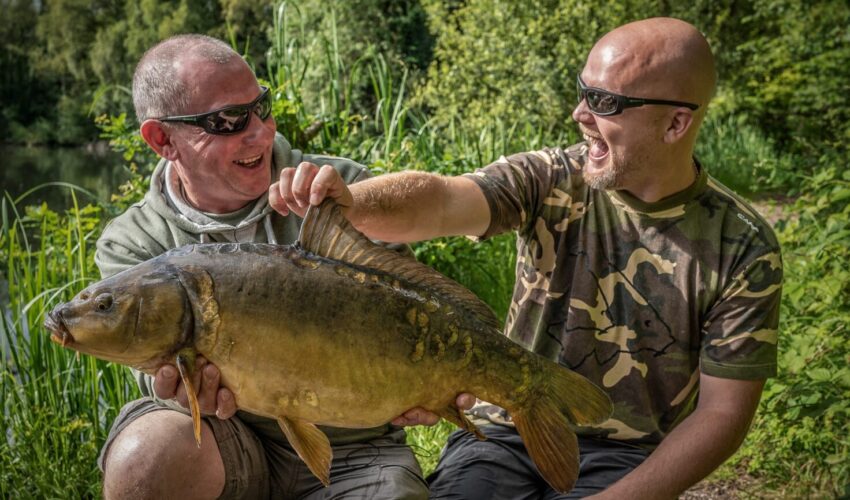
Take a friend fishing
Get ready to hit the water! From April 18th to May 4th, 2025, you can get a free fishing license to take a buddy out and show them what fishing’s all about. Yep, free! It’s all part of the “Take…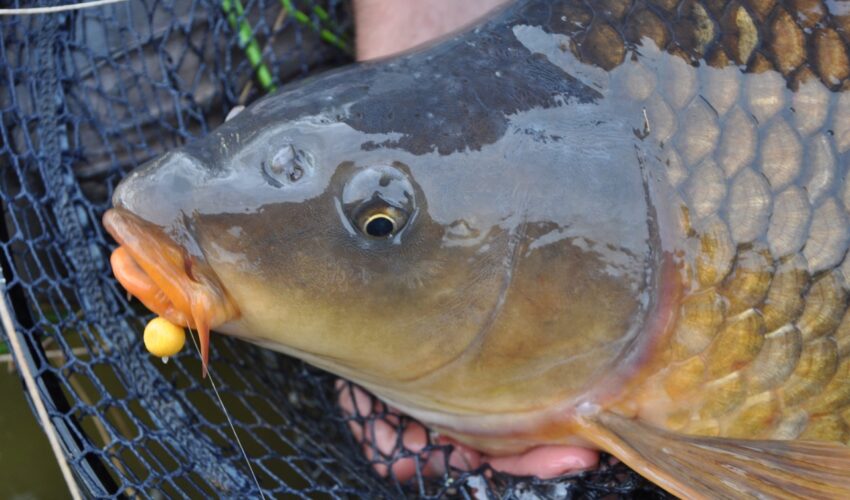
Fishing tips for hard days: How to get more bites
It happens to the best of anglers. Whether conditions are tough, the fish are moody, or our plans simply aren’t working, there are days we struggle. But what can you do to catch fish that seem unwilling to cooperate? There’s…Search by Region or County
Find new places to go fishing in your local area or county by choosing your destination below










Comments